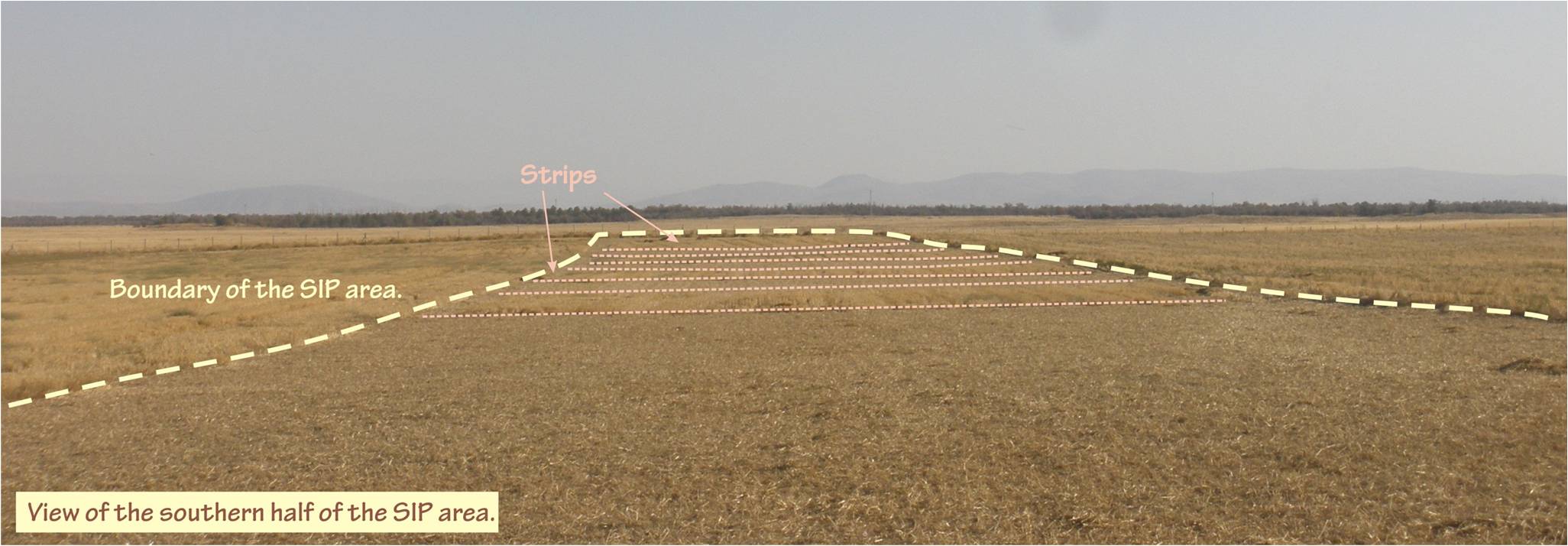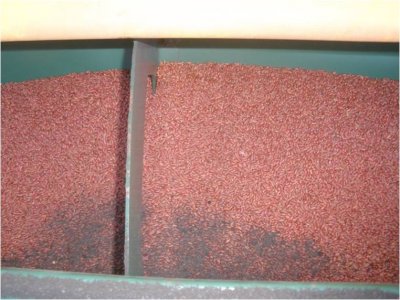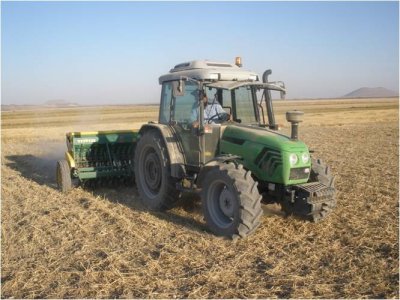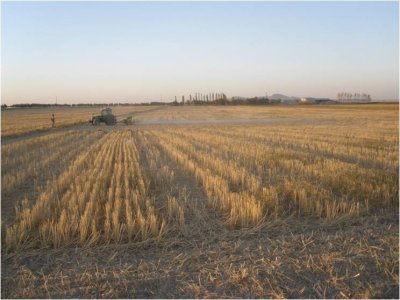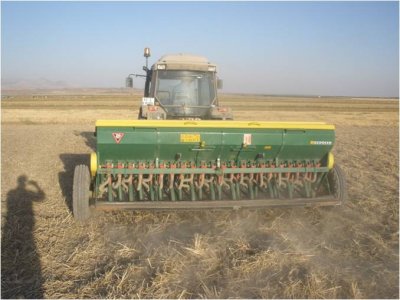|
Implementation of minimum tillage, mulching and fallow technologies
Authors: Eskişehir Osmangazi University (ESOGU)
|
The study site is generally considered an area that is the most prone to the wind erosion in Turkey. But after the import of drilling technology by farmers of the region this problem in croplands are greatly reduced though the same problem still persists in very poor pasturelands.
Our proposed experimental area is very close to the Apak Yayla settlement is an irrigated cropland with low organic matter content and prone to wind erosion due to unfavourable soil texture. Soils are typically thin (25-30 cm) and sand grade with very low clay and organic matter content.
|
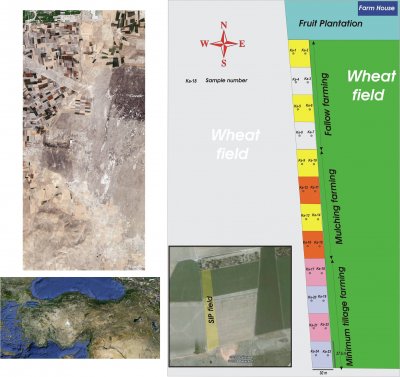 |
| Three technologies have been implemented in the experimental area in the light of stakeholder workshop discussions: |
- Minimum tillage
- Mulching
- Fallow
|
| Mode of implementation |
Experimental work completed |
- For each of the three technologies, four 30 m x 37.5 m sized rectangular parcels were selected, orientated N-S (dominant wind direction).
- In the implementation of each technology two strips were left for fallow. These fallow strips will be used as control plots.
- In the coming year, the fallow parcels will be crop land and vice versa.
|
- Soil sampling (24 samples).
- Soil analysis (elemental, organic matter, pH, EC, texture).
- Soil thickness (35 cm).
- Daily meteorology measurements are available for the 2005-2007 period.
- Ploughing, seeding (wheat for bread) and fertilizer and pesticide application have been completed.
|
Future monitoring
- Regular soil surface assessment
- Crop characteristics
- Mulch cover fraction
- Crop growth and health characteristics
|
- Surface roughness observation
- Applied irrigation amounts
- Agronomic measurements
- Yield assessment
|
|






